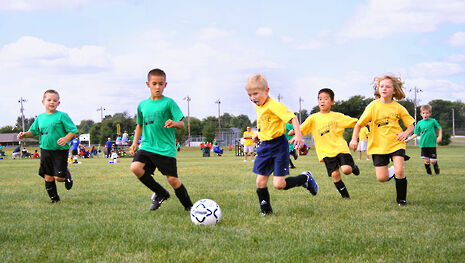Are we failing children in sport?
In today’s world, sport is vital for children’s education. But are we doing enough to make it inclusive and accessible for all?

School sport has a bad reputation. For most people, the memory seems to consist of being outside in the cold, hitting or kicking a ball around on a field either waterlogged or frozen solid. For me, someone who spent more time bunking off in the library than actually out on the pitch, it was an activity which was not only unwelcome but one to be actively avoided. An unfortunate collision between a netball and my mouth at the tender age of seven, which resulted in a few missing teeth, was never forgotten. I suppose you could say I suffer from school sport traumatic stress disorder.
According to Ronald Jeziorski, author of The Importance of School Sports in American Education and Socialization, it is vitally important for children to have access to sports and games. As well as empowering young people and promoting higher self-esteem, team sports can educate people about the importance of teamwork and following the rules. The benefits of physical exercise are obvious: sport helps people to maintain a healthy lifestyle and diet. The importance of sport can also transcend healthy living: the United Nations High Commissioner for Refugees, for example, uses sport and play programmes to encourage young people, particularly girls and young women, to attend school within refugee camps across the world. UNICEF also has a strong focus on using sport to promote girls’ education through events and awareness campaigns.
Have those of us who did not engage in school suffered because of it? I doubt that anyone has been irrevocably damaged by the decision not to play sports at school, but I do believe that more effort could be made by schools to engage in sports beyond the realms of being yelled at on soggy fields. Taking a self-defence class last term, organised by my college’s Women’s Officer, I realised that physical exercise – especially when it goes beyond kicking a ball around – can prove to be empowering and engaging, rather than simply ‘healthy’.
Schools should consider transcending the more traditional termly orthodoxy of rugby, football, cricket and tennis, and that of hockey, netball and rounders, by offering a far broader range of physical exercise, like yoga or martial arts. Schools across the social spectrum need to provide a wider range of activities for students.
If the necessary change can be identified, it is less clear whether it can be funded. David Cameron stated that each year primary schools will continue to receive £8,000 for sports, plus £5 per pupil. Christine Blower, General Secretary of the National Union of Teachers, said annual funding of about £9,000 per school would not “add up to a great deal” for schools without a dedicated PE teacher. Furthermore, government cuts to the Department for Culture, Media and Sport (DCMS) announced in 2015 will see its budget reduced by 5 per cent. This could end up having a detrimental long-term effect on the future and finances of school sport in general. The accessibility and availability of sports, both in school and in local areas, need to be encouraged by the government in its policies as well as in its outlook.
If the 2016 Rio Olympics can encourage and inspire people, especially children at school, to engage in sport on and off the football pitch, then it is paramount that we give them the opportunity to do so. If the right changes are made, perhaps the next generation will require one less trip to the dentist than I did almost 15 years ago.
 News / Caius mourns its tree-mendous loss23 December 2025
News / Caius mourns its tree-mendous loss23 December 2025 News / Clare Hall spent over £500k opposing busway 24 December 2025
News / Clare Hall spent over £500k opposing busway 24 December 2025 Comment / Yes, I’m brown – but I have more important things to say22 December 2025
Comment / Yes, I’m brown – but I have more important things to say22 December 2025 Comment / The ‘class’ of Cambridge24 December 2025
Comment / The ‘class’ of Cambridge24 December 2025 Interviews / Politics, your own way: Tilly Middlehurst on speaking out21 December 2025
Interviews / Politics, your own way: Tilly Middlehurst on speaking out21 December 2025







